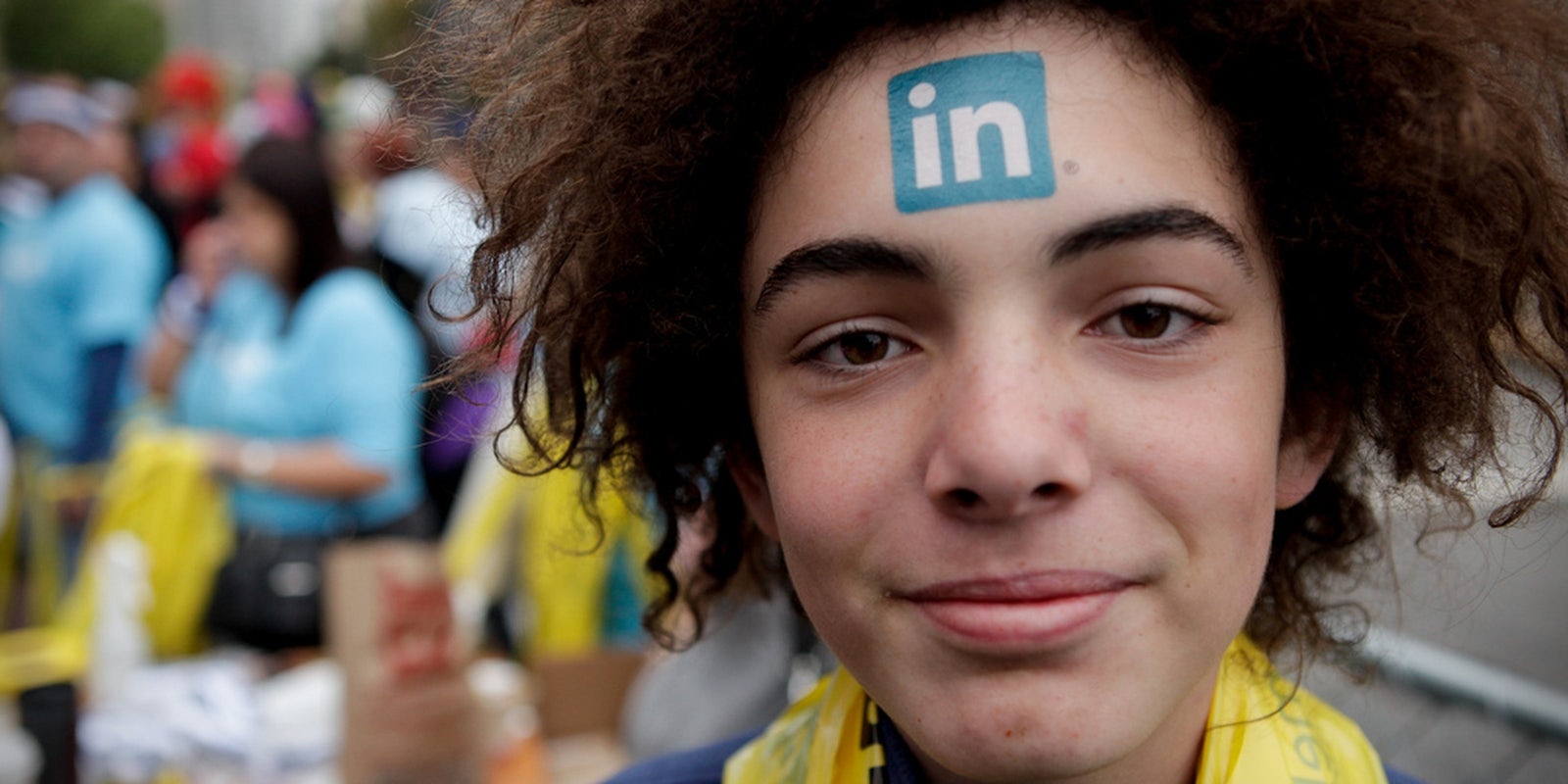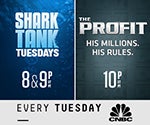LinkedIn can be an incredibly powerful and useful network for your career. Whether you are employed in a position you like or looking for a new career, LinkedIn can help you move forward professionally. While it’s the standard for the professional face that you present online, many LinkedIn members don’t take full advantage of all that the network has to offer. Or even worse, they aren’t using the network correctly and may be negatively impacting their professional image.
Chances are, you are not giving your profile the attention it deserves. That neglect can have real impacts professionally. LinkedIn is more than just your online resume—it’s a real-time reflection of your goals, professional development, and expertise. It can signal to recruiters, your bosses, your coworkers, and potential business partners how you work and what areas you are interested in.
Below we’ve outlined 7 common mistakes that you may be making with your LinkedIn profile. We’ve also graded the profiles of Shark Tank’s Shark Investors. What other pieces of advice do you feel professionals need to know to get the most from LinkedIn? Share your own tips with us in the comments, or tweet at us using the hashtag #SharkTankTuesdays (don’t forget to mention @DailyDot) to be entered into a random drawing for Shark Tank and The Profit prize packs.
1) Not keeping your profile updated
You’re probably not changing jobs or positions that often, so many professionals think that they don’t have updates to make to their LinkedIn profiles. Of course, if you do earn a new title or take on a new job, you’ll want to update your page, but you don’t need those major changes to be active on the network. A dormant profile is the same as a dormant building: It looks unused and neglected to those passing by, and they may think the same of your career or professional development. Consider posting some status updates about your job interests, or links to articles and content that are relevant to your career and goals. This shows that you are actively engaged in the discussions and issues that are important to your job.
2) Treating LinkedIn like other social networks
The key part of LinkedIn’s uniqueness is it being a professional network, so while you want to keep your profile and activity updated, you should keep it focused on your career. Don’t treat LinkedIn like Facebook, posting vacation pictures or updates about where you’re eating. Likewise, while you can certainly engage in some quality conversations and discussions on the network, you may want to be more formal than you are on Twitter or other platforms. It’s a fine line, but you should keep in mind the differences in how you may present yourself at work and in your personal life. LinkedIn’s focus on professional activity is it’s biggest advantage to you. And LinkedIn is most definitely not for this!
3) Not having a professional profile photo
It’s amazing how many profiles on LinkedIn do not really represent the person professionally, and that is nowhere more obvious than in the profile photos that users upload. In fact, many profiles don’t even have a photo at all! You don’t necessarily need to have a professional headshot on your profile, but the photo should be representative of how you present yourself at work. You can get creative, but no cheesy selfies or photos of pets. If you don’t have a professional photo, consider one of you in a work setting—giving a presentation or performing what you do for your career. Just as in a job interview, the way you present yourself is important.
4) Using too many buzzwords
Sure, we all fall into the trap from time to time of reverting to trendy professional buzzwords associated with our jobs. It’s a common language that can signal a level of engagement in a discussion, but more often these buzzwords just come off as a shorthand to expertise without truly understanding the subject. Be careful not to litter your profile description with the kind of business jargon that really says nothing about your talents or experience. While careful use of certain terms may help recruiters find you on the network, these should be used deliberately. A few buzzwords might help your profile rise in a recruiter search, but when inquirers get there they want to know who you are professionally, not see the empty buzzword suit that anyone could put on.
5) Not sharing your professional successes
LinkedIn is exactly the place to share your major wins. Certainly if you earn a new title you should update your profile, but if you’ve won an award, published an article or blog, are participating in an event, or have been recognized for a professional achievement, you should post about it on LinkedIn. Not everything needs to go on your profile, but these are perfect instances of career successes and acknowledgements that can serve as good status updates to share with your professional network. Likewise, when others in your network post updates of their achievements, like the notifications or congratulate them. Being aware, and being engaged, will help open up conversations and opportunities.
6) Connecting with everyone
We’ve all gotten that LinkedIn notification to connect with someone that we’ve never met or had any communication with. When it comes to your LinkedIn contacts, you should think quality over quantity. You should really only be connecting with people that you have worked or communicated with, to keep your network truly among those with whom you are in contact. This makes LinkedIn a more effective network for your professional goals and needs, and also for making connections and introductions among your network that may be needed. If there are contacts that you would like to have, you should try to establish that connection before just generically reaching out on LinkedIn, or have a specific reason for why you are asking to connect with that person. The size of your network is less important than your ability to actually leverage those connections effectively.
7) Not asking for recommendations
We are often hesitant to ask managers, coworkers, or business contacts for recommendations, but if you wait until you are looking for a new job to ask for these recommendations, it will be much more difficult. You don’t want to ask everyone you’ve worked with for a recommendation, of course, but don’t be afraid to reach out to someone that you’ve done successful work with for a quick endorsement if they are active on LinkedIn. Likewise, you should be generous in your endorsements and recommendations, prepared to return the favor for those that take their time to recommend you. Don’t just blanket endorse your contacts, but rather make the recommendations meaningful, which will serve them better and result in more substantial recommendations for yourself.
…
Now let’s see how our Sharks stack up on their LinkedIn profiles! While they don’t necessarily need to be as proactive as entrepreneurs trying to build their networks, some still use LinkedIn quite effectively for their personal brands.
Mark Cuban: B
Mark certainly takes advantage of LinkedIn as a platform to further his thoughts and investments. He keeps it updated and engages by sharing frequent blog posts on important trends and issues. His profile remains a bit tongue-in-cheek, however, much like Mark himself. While he can get away with declaring himself simply “self-employed,” a little more precision would be helpful. Also, we can’t decide whether to add or deduct points for his profile photo with Dallas Mavericks NBA Championship trophy.
Lori Greiner: D
You would think that for a scrappy inventor and entrepreneur like Lori that she would be more proactive in professional self-promotion. While her profile is built out to the minimum, we dock Lori major points because she has no connections. Clearly she’s set up her page as more of a placeholder rather than really engaging on the network.
Barbara Corcoran: A+
If you want to see how to do a LinkedIn profile well, look to Barbara. She’s set her page up with thorough details but without an overly long biography. It strikes just the right balance of touting her achievements and successes without listing every tiny point along her path to success. Furthermore, she actively shares blog posts and engages on the network in a truly constructive manner.
Well this simply will not do. Robert doesn’t even bother to include a profile photo, and while he does at least have his current position and company listed, he provides no past history or bio. It’s hard to think of less that Robert might do here to promote himself on LinkedIn.
Kevin O’Leary: C-
Kevin could do a lot more to make his LinkeIn profile pop, but he has at least done the minimum here by providing his past experience and positions and a good (meta!) professional headshot. And unlike Lori’s similar profile, he does at least have a few connections. Those must be 61 pretty important people!
Daymond John: A
As expected, Daymond’s profile looks marvelous. The logos alongside his companies are a great touch that really adds character to his page, and the details and bio are thorough and thoughtful. The only things we’d suggest being better here are his photo (Daymond seems to have taken the term “profile” image a bit too literally!) and some more active participation. He should follow Barbara and Mark’s lead and consider engaging and sharing more posts and content.
Entrepreneurs, take note: The Sharks will definitely check your LinkedIn profile. Tune in to Shark Tank every Tuesday starting at 8pm ET and see who’s in and who’s out. Can’t get enough business advice? Be sure to watch Marcus Lemonis give struggling small businesses the chance of a lifetime on the Season 2 premiere of The Profit Tuesday, Feb. 25, at 10pm ET—only on CNBC.
Photo by A Name Like Shields Can Make You Defensive/Flickr (CC BY 2.0)

